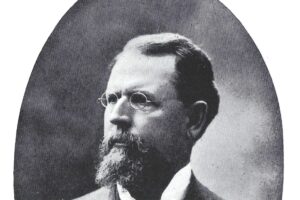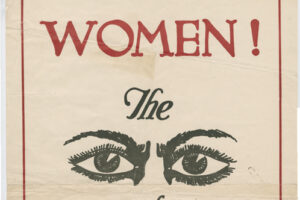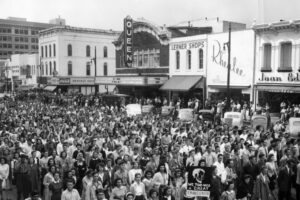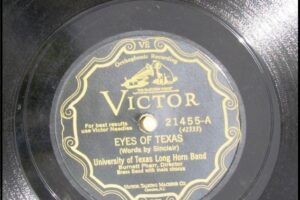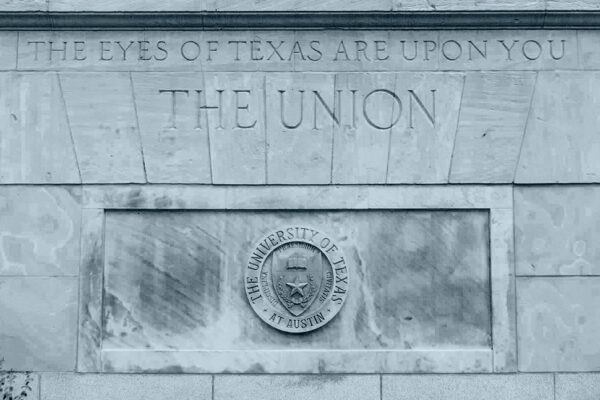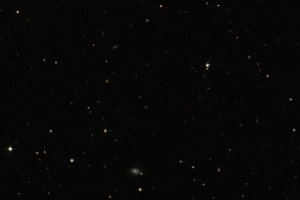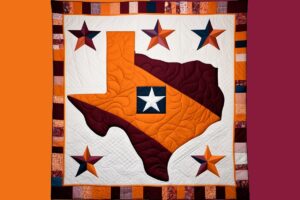AUSTIN, Texas — A committee of two dozen faculty scholars, students, and alumni — including athletes and Longhorn Band representatives — has completed their work documenting the nearly 120-year history of “The Eyes of Texas” as part of The University of Texas at Austin’s commitment to fully own, acknowledge and teach about its school song.
The Eyes of Texas History Committee released their findings in a 58-page report available to the community on a dedicated, public website that includes a timeline, committee member and expert videos, personal stories, and links to the report’s extensive documentation.
“The Eyes of Texas” will remain as the university’s alma mater, which had previously been decided and was not a matter under consideration by the committee.
The committee’s research uncovered important facts and historical context about the song, including details that have not been widely circulated during recent discussions.
“I commend the committee for its outstanding work and willingness to explore a subject that has aroused such strong passions across our community,” said Jay Hartzell, president of The University of Texas at Austin. “The members’ work offers a model for how society can talk across divides to tackle difficult subjects. In particular, I am proud of the students and student-athletes who used their voices to raise concerns last summer and then stepped up to engage in this conversation and contribute to the research. They exemplify our mission of researching, teaching, and then changing the world.”
The report shows how the history of the song mirrors the history of the university, state and nation, combining a detailed examination of the song’s origins with a comprehensive narrative chronicling its evolution over time.
“These facts add nuance and richness to the story of a song that debuted in a racist setting, directed at the student body as a reminder to represent the university at all times,” said the committee’s chair, Professor Richard Reddick. “Learning the history of the university, starting from a time when Black students were excluded, presents an opportunity to think about how they and other communities of color resisted, with the goal of inclusion, and our work that remains to ensure all members of our community feel they belong.”
Some key findings:
- While conventional wisdom traced the title to a comment by Gen. Robert E. Lee, the committee concluded there was “very low likelihood” the line originated with Lee.
- Reviewing the creation of the lyrics in 1903, the committee found no evidence they were intended to show nostalgia for slavery but found facts supporting the song’s message of accountability.
- The song borrowed a popular melody of the time from “I’ve Been Working on the Railroad.” Evidence points to the melody being used because of its familiarity and popularity among students in the early 1900s. While some lyrics of the Railroad/Levee song are racist, the tune was selected at a time when borrowing well-known melodies was a common practice.
- Research reveals “The Eyes of Texas” was intended to affectionately parody the university president’s famous signatory line. That “The Eyes of Texas” was almost certainly debuted in blackface is a painful reality of the song’s origin, notes the report’s Executive Summary: “Although it was not written in dialect and does not appear to have been composed as a minstrel song, we are pained and uncomfortable with this aspect of its history. We believe it is important to fully acknowledge and learn from the university’s past.”
The song was an immediate hit on campus in 1903. By 1905, it was sung as a “reverential hymn” at the funeral of the university president. By 1916 it was a fixture at Spring Commencement. Among many notable performances through the years, one of the university’s Precursors (the first group of Black students to attend UT), opera-singer and Distinguished Alumnus Barbara Smith Conrad, sang the song at the 2000 Commencement.
The committee documented how the song appears in deeply moving ways across a dozen decades, including on the battlefields of war, as an anthem of solidarity, and in moments of protest, such as a 1966 march from the Rio Grande Valley to the Texas Capitol by farm workers and clergy. In another example, UT students marched on the Texas Capitol singing the song to protest the firing of President Homer Rainey, who was accused among other things of reportedly wanting to admit Black students to the university.
The university formed the Eyes of Texas Historical Committee in the summer of 2020. Responding to requests for change from students, faculty, staff and alumni, President Hartzell outlined a sweeping series of actions to promote diversity, inclusion and equity and to more fully support Black students on campus.
The initiatives, which are tracked on a university website, include: allocating a multimillion-dollar investment from athletics revenue to recruit and support Black students; adopting a plan to recruit and retain world-class faculty members who bring more diversity to UT; renaming spaces and erecting new monuments to celebrate the history of the university’s first Black students; and owning, acknowledging and teaching about all aspects of the origins of “The Eyes of Texas.”
With its report, the history committee delivered Hartzell additional recommendations for action. The “40 recommendations for the Forty Acres” include creating a fund (with the Texas Exes) for student-athletes to have an active role in efforts for positive social change; creating an institute at UT to study and encourage difficult conversations about controversial topics; and reinforcing the song’s status as UT’s alma mater while finding multiple ways to teach its history and the history of the university.
“This report gives us a common set of facts for more conversations,” said Hartzell. “We all need to respect that people will read it and reach their own conclusions, and as always, no one in our community is required to sing the song. However, conversations on college campuses about areas where we disagree are often the most valuable catalysts for change. What starts here, through these conversations, can change the world.”
